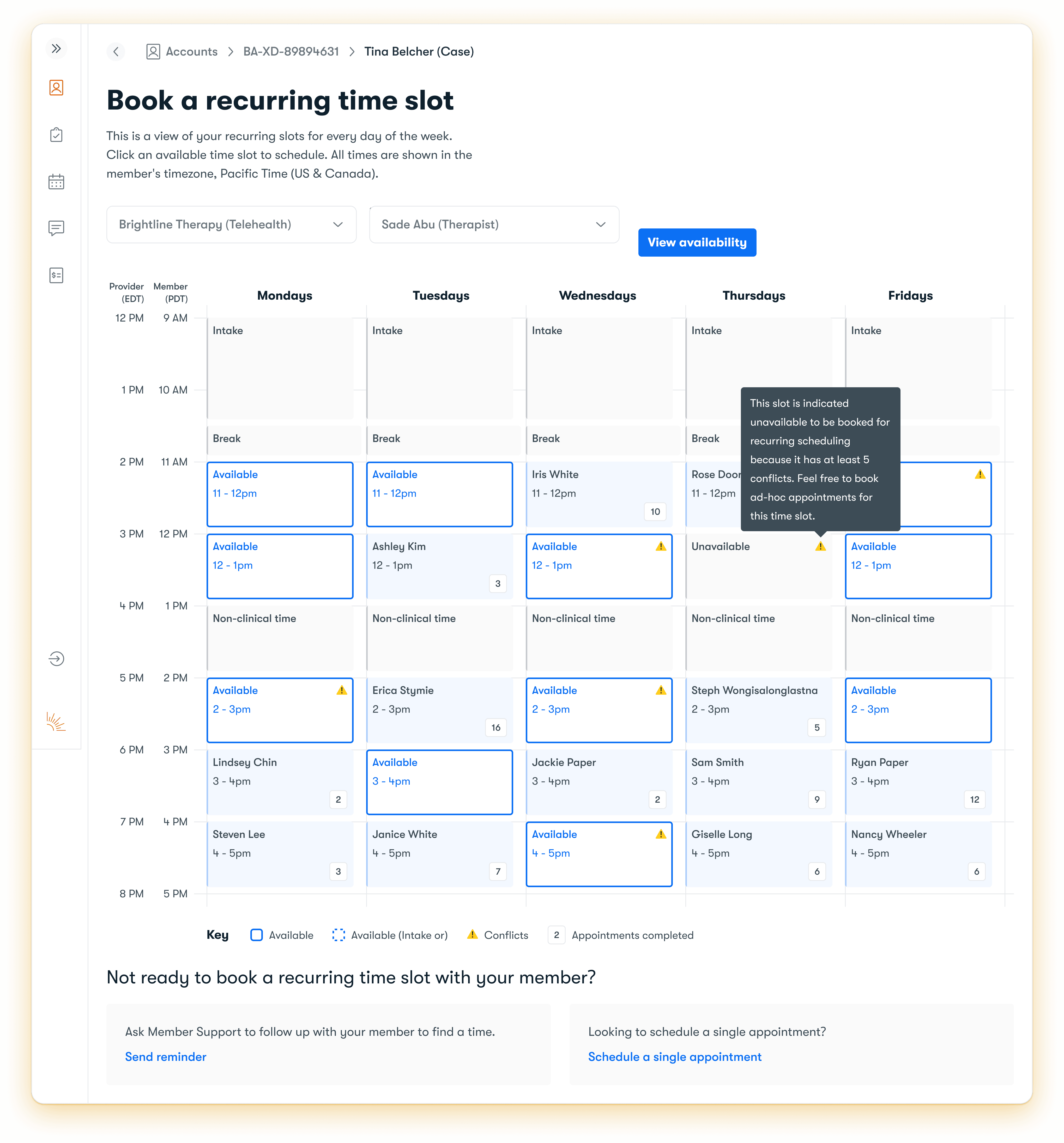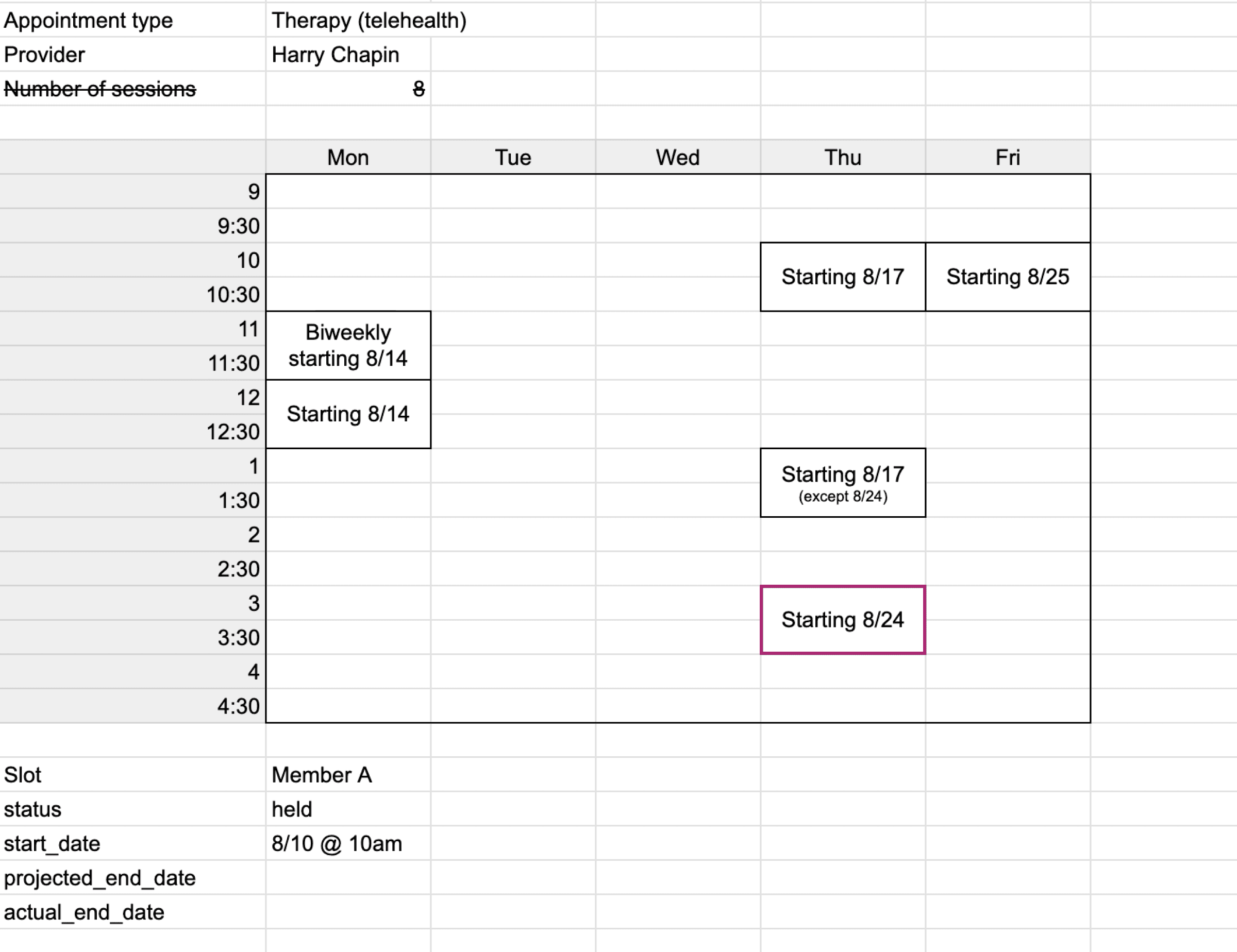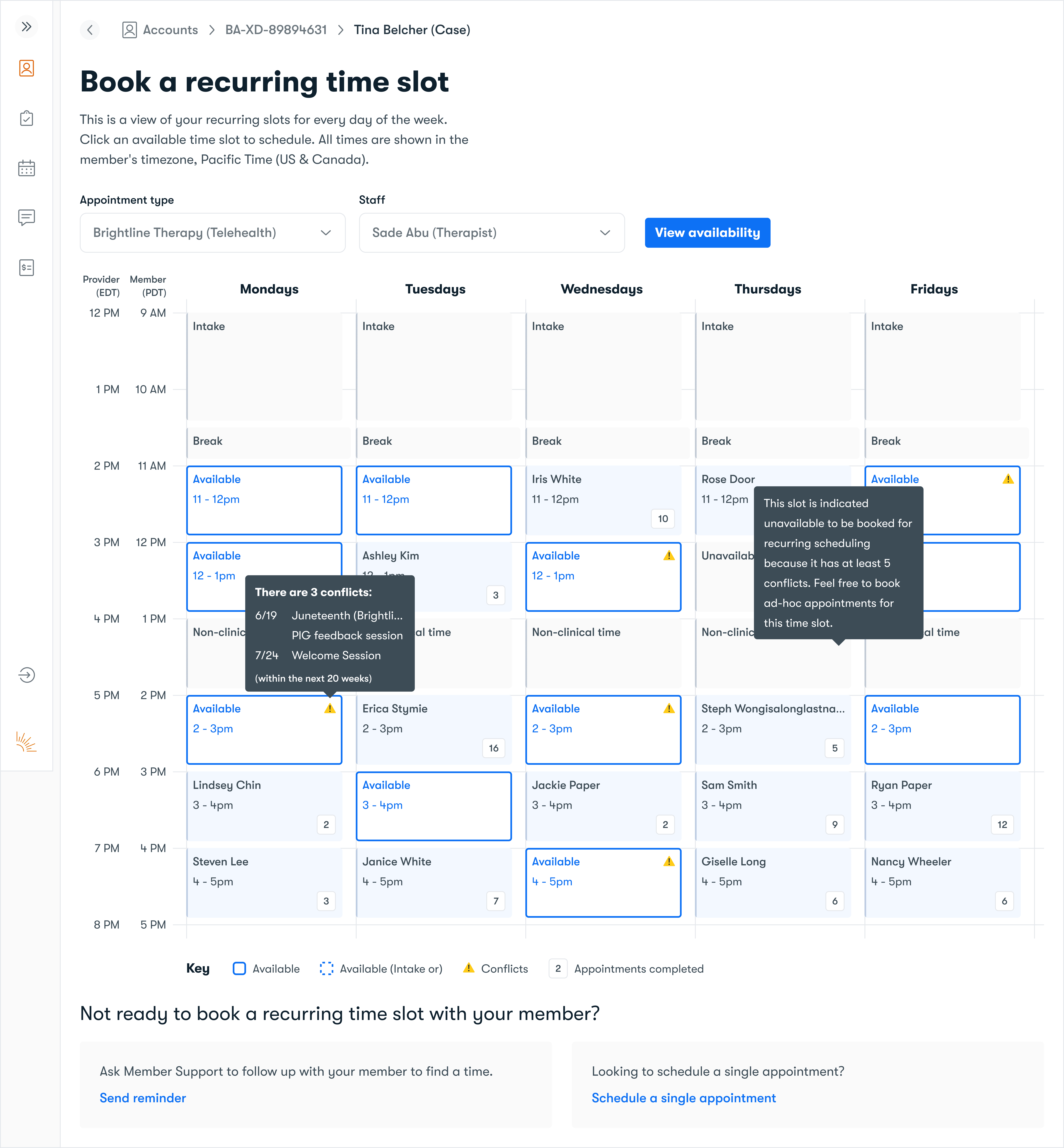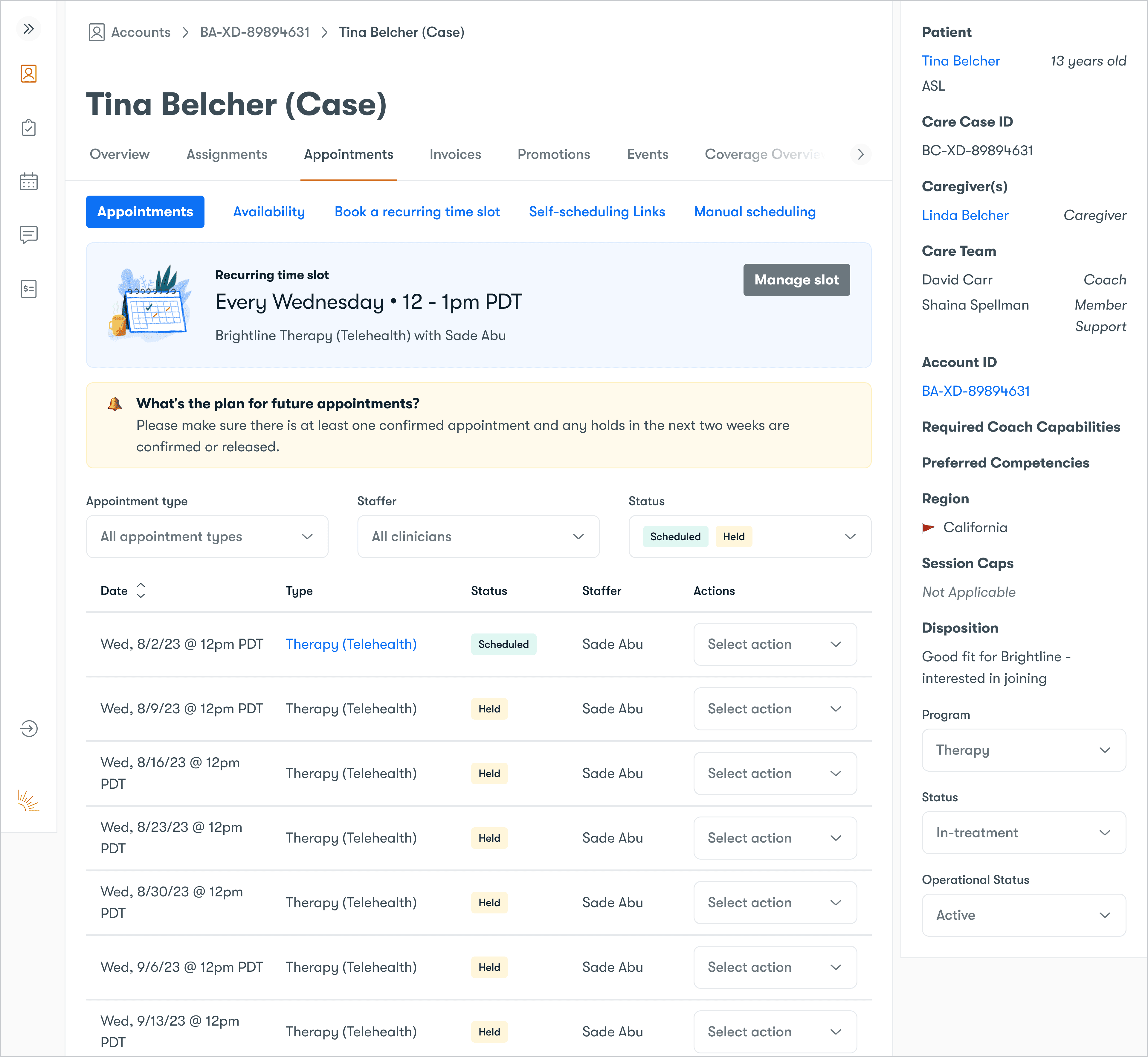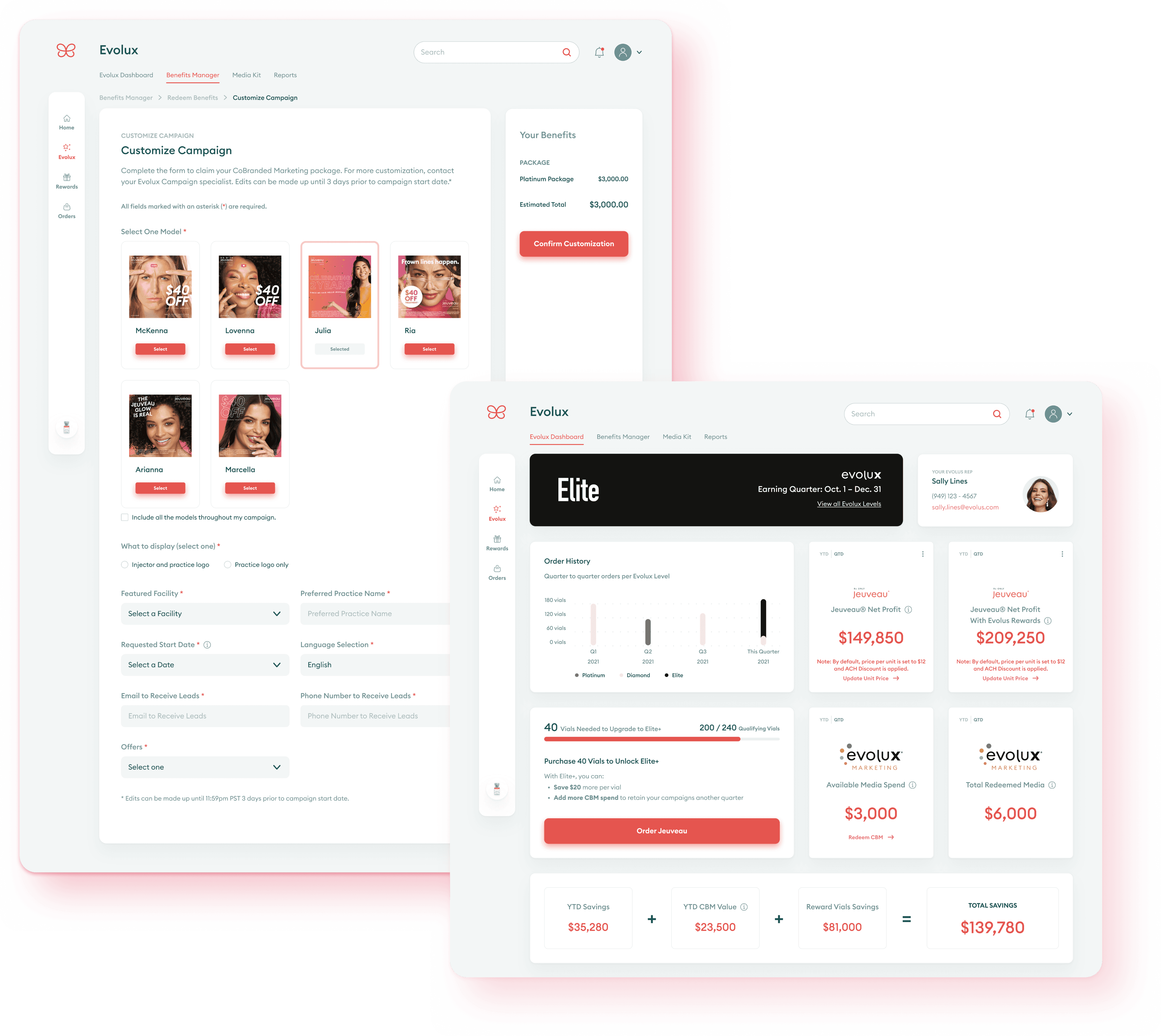CLIENT
TIMELINE
ROLE
CHALLENGE
Inefficient scheduling practices result in poor member experience, provider burnout, and non-scalable workflows.
SOLUTION
Slot-based scheduling protects member time and upgrades the member experience to have a consistent ongoing time. It also allows coaches and therapists (providers) to have visibility into their templates and book within that structure.
IMPACT
A 40% drop in back-and-forth communication between providers and Member Support and an increase up to 5% in provider utilization.

Define
Problem
Members struggled to find consistent ongoing availability with a provider that met their needs. Member cancelations created gaps in provider calendars which led to inconsistent availability that was often difficult to refill.
Providers, on the other hand, managed their caseload manually and did not know how to optimally book care to maximize their schedule while ensuring sustainable days. Back-to-back sessions and the desire to accommodate members led to provider burnout.
To meet the high demand of members, the business needed to optimize provider calendars and give them the tools to increase the chances of delivering care.
Approach
Providers used our existing recurring scheduling tool which was a decent foundation, but there were still major gaps:
• Providers didn’t have full visibility of their cases that week
• There was no protection of member time
• Member Support was brought in to resolve any scheduling conflicts
How could we solve for those gaps?
Original recurring scheduling tool
Wireframe of new scheduling tool
First iteration of slots
Other launches at this time
We needed to be mindful of any additional changes to provider workflows especially since the migration of a new EHR tool (Electronic Health Records or a digital record system of our members) and the launch of a significant partnership with the California Department of Health Care Services were happening around the same time that we planned to roll this out.
Ideate
Weekly working group sessions with cross-functional teams took us deep into the weeds to solve for myriad use cases and juggled our member experience, provider experience, and business needs.
A few questions...
We were running in circles around so many questions including:
How long could we “hold” future sessions beyond what was confirmed to protect that member’s slot?
How would slots differ between therapy and coaching?
How do we layer the newly-launched provider template into this view from a UI perspective?
How would conflicts affect the availability of a slot?
Final design - Recurring time slot page
Original Appointments page
Final design - Appointments page
Pilot
Our first pilot with 8 therapists and 2 Member Support members over the course of 8 weeks confirmed what we thought.
Insights
Overall, the pilot was a success.
100% rated the new slots tool 8+ on a 0-10 scale (10 being easiest to use)
90% of eligible cases booked via new slots tool (up 15% from our goal of 75%)
“
Feedback
From a provider’s perspective, the more information they had, the better. I had simplified my original design, but with this feedback, it made sense to add select elements back in.
Providers also didn’t have full visibility of their cases at a high level because the slots tool was buried within a specific care case. The request to be able to see their template and who was actually booked led us to an add-on project, the caseload view.
Impact
Recurring time slots not only protects member time and upgrades the member experience to have a consistent ongoing time, but it also allows providers to have visibility into their templates and book within that structure.
Success
40% drop in back-and-forth communication between providers and Member Support
Up to 5% increase in provider utilization
Slots is just one piece of the puzzle
While there was some success of this project, we knew it was just one part of the whole picture.
Off-peak hours are still not filled - members just don’t want those times
There is less availability since the launch due to another company initiative partnership
Complex custody arrangements + consent requirements prove to be a significant barrier to continuing care
The data did not account for member satisfaction.
Reflection
This was a complicated business initiative of which I’m proud to be a part. The competing priorities of the provider, member, and business was a delicate balance with multiple complexities. Not only were the concepts difficult to grasp with every nuanced use case, but I also joined this new team midway through the project.
If given additional time and resources, I'd love to see member reactions and feedback to this updated framework guaranteeing a weekly slot for their sessions.
